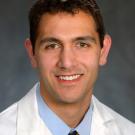In this video, Lindsay T. Fourman, MD, talks about the key take-away messages from her study, which was published at CROI 2020. Read the transcript here.
Additional Resources:
- Fourman LT, Stanley TL, Feldpausch M, et al. Clinical predictors of liver fibrosis presence and progression in HIV-associated NAFLD. Paper presented at: Conference on Retroviruses and Opportunistic Infections; March 8-11, 2020. Boston, Massachusetts. http://www.croiconference.org/sessions/clinical-predictors-liver-fibrosis-presence-progression-hiv-associated-nafld.
- Clinical Predictors of Liver Fibrosis Presence and Progression in HIV-Associated NAFLD
- Effects of Tesamorelin on Liver Fat and Histology in HIV+NAFLD
- Hepatic and Metabolic Characteristics of Patients With HIV and NALFD
- How NAFLD Affects Patients With HIV Differently Than the General Public
Lindsay T. Fourman, MD, is a physician at Massachusetts General Hospital in Boston, Massachusetts.
TRANSCRIPT:
Lindsay Fourman: There are several take‑home messages to take away from this study. One message is that the rate of fibrosis and fibrosis progression in our sample was very high, particularly fibrosis progression which is much higher than in the general population.
The presence of not having fibrosis at baseline or not having NASH at baseline doesn't reassure you that this patient is not going to have aggressive disease. We saw that over half of the sample who did have fibrosis progression did not have any evidence of fibrosis at baseline. The presence of a baseline liver biopsy that's reassuring, doesn't mean this patient should not be monitored closely. They should be monitored very closely.
The other big take‑home point that we found was that baseline visceral fat was a very important predictor of who would go on to develop fibrosis progression. This is a novel finding and has not been previously shown.
It's very interesting because this is not a liver‑specific finding. It probably speaks to the fact that visceral fat releases a lot of inflammatory and pro‑fibrotic mediators that are directly released and delivered to the liver through the portal circulation, and that that could be affecting liver physiology.
Given that people with HIV tend to have increased visceral fat accumulation, this could account for why there is such a high progression rate of fibrosis in people with NAFLD and HIV.
Taking from that, strategies to reduce visceral fat need to be further investigated, to see if that could lead to a reduction in the progression rate of NAFLD and in the development of end‑stage liver complications, including cirrhosis, hepatic decompensation, and hepatocellular carcinoma. This needs to be studied further.
We did show that Tesamorelin with a reduction in visceral fat did prevent fibrosis progression, which is very promising but also needs to be further followed up in subsequent studies.



